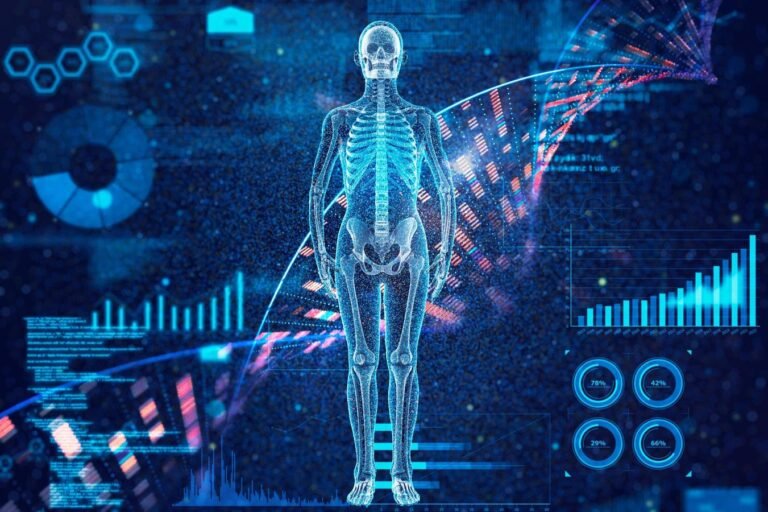Zameer Rizvi is CEO and Founder of Odessoimproving patient outcomes through artificial intelligence and machine learning.
According to McKinsey ResearchersGenerative AI (GenAI) has the power to “unlock some of the $1 trillion unrealized improvement potential present in the (health care) industry.” Underfunded and overburdened, the sector is far from fulfilling its fundamental mission, which is to continually improve the lives of patients. GenAI can change this with its ability to introduce a huge amount of enterprise intelligence, freeing up clinical resources and allowing healthcare professionals to focus on higher value tasks. Right now, this is exactly what the healthcare industry needs.
In this article, I share the results of my two decades of automation experience that have allowed me to lead the most impactful application of GenAI technologies today. GenAI comes at the right time for the healthcare industry by helping to deliver better patient outcomes. There are myriad ways GenAI can help in specific medical areas and in-depth clinical specialties. But this article will stick to a 30,000-foot view to examine the impact of GenAI as a whole. To do this, I believe we need to examine how GenAI can improve accuracy, efficiency, and professional fulfillment. I intend to address the deeper domain impacts of GenAI in subsequent writings.
Exploring the benefits of GenAI in healthcare
There are several ways GenAI can help transform the healthcare sector.
Reduce time, money and pressure
The learning and performance potential of GenAI makes it easy to scale up a range of tasks, relieving pressure on clinicians. With its immense computing power, GenAI can read, interpret and process large amounts of specialized information in seconds. On the other hand, the same information can take much longer for a human to process. A GenAI-based system can understand and synthesize the most important details from a large amount of information, potentially save a clinician 20% of their time spend on the things that matter. Automating these repetitive administrative tasks that traditionally require manual labor and a significant time commitment helps improve the work-life balance of healthcare professionals while providing high-quality care.
For example, instead of healthcare providers having to manually file patient information into a system, they can simply upload their handwritten note, PDF, image or other document and GenAI can extract key information from it. and enter data into the system on their behalf. .
If you think about the number of patients a doctor sees each day, which is between 11 and 20 in 2018, this lightens a heavy load. The same year, in the United States, almost all 300 doctors served 100,000 patientswhich makes GenAI’s support in this area significant.
Accelerate healthcare processes
In today’s systems, clinicians face not only the pressure of providing quality care, but also the pressure of documenting, uploading, submitting and reading reports, as well as calling technical support when they encounter problems. What if most of these manual, repetitive, low-value tasks could be automated? Well, now you can with GenAI.
Let’s combine the time, money, and user frustration saved and focus on how quickly this low-value work can be done. With the computing power of an averaging machine 10 million times faster than a human brain, GenAI can also increase the turnaround time of processes and patient outcomes.
In the past, some lab results could take hours or even days to process. GenAI can reduce patient wait times and enable life-saving treatments to be delivered more quickly.
Reduce human errors
Finally, accuracy is the most important consideration in healthcare: without it, it is impossible to treat patients correctly. According to According to a 2018 Johns Hopkins study, more than 250,000 people die each year in the United States due to human error. This is a major public issue that we still face today.
GenAI has the potential to change this. It can automate regular data reviews and more accurately process electronic medical records (EMR) and diagnostic reports (like x-ray images or lab results). It can also quickly analyze large amounts of medical data and identify red flags, patterns and abnormalities that the human eye cannot detect, adding a layer of assurance in the diagnostic process. In some implementations of GenAI, we were able to achieve 98% accuracywhich is comparable to or better than what humans achieve today.
Meeting the challenges of GenAI in healthcare
Sufficient training is required
One consideration is that healthcare providers will need to become familiar with the new technology, as legacy systems currently in use will need to be updated, modified, or completely replaced. Like any new tool, after a training period, it will be easier to use.
Machine learning relies on the data it feeds
Another consideration is that while GenAI can be a powerful tool, it is exactly that: a tool. Its power depends on the information and data provided, and if it is based on bias or faulty data, that is what it will use as a benchmark. Therefore, it is the responsibility of those entering and collecting data to maintain the robustness of the system.
Security risks involved
Finally, as with any technology, there are security risks involved. We are all too familiar with data leaks and hacks, and the number and severity of attacks are only increasing today. It is important that all clinics and hospitals have a risk mitigation plan. This should be taught and learned as part of training.
Conclusion
Many industries are going to be affected by GenAI and machine learning. Healthcare, however, might be the most obvious case. There are many applications of GenAI, making it an exciting time in human history for clinical advancements, whether it’s getting more personalized health advice from your clinician or to just let them become better, more efficient doctors because they have a lot more time on their hands. GenAI in healthcare opens up growing opportunities. It is time for healthcare providers to explore its potential.
Forbes Technology Council is an invitation-only community for world-class CIOs, CTOs and technology executives. Am I eligible?
